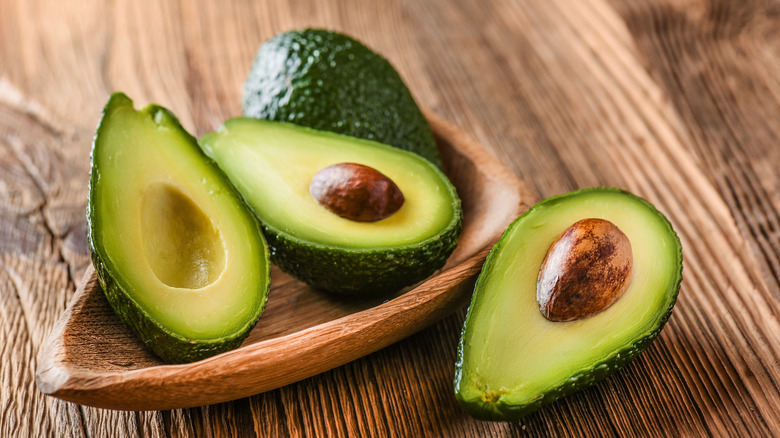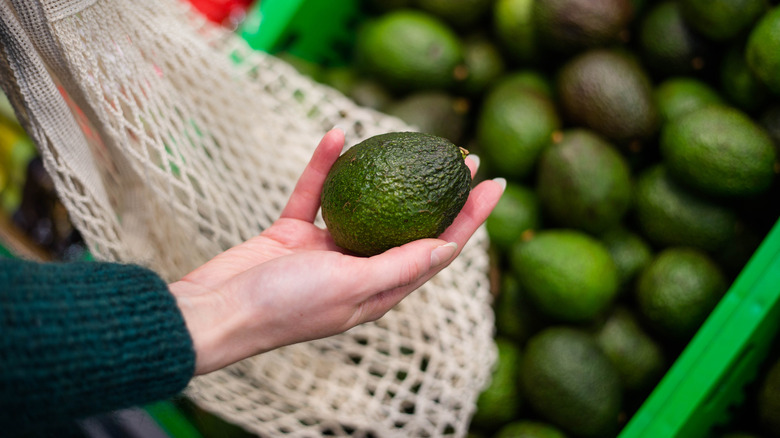What The Strings In Your Avocado Actually Are
Each day, you make your way to the kitchen to prepare the one thing that got you out of bed in the morning: breakfast, which may or may not require a ripe avocado. On a good day, the rock-hard few you picked up earlier in the week would finally feel soft enough to eat. However, you can never truly know until you've cut into one. As your anticipation builds, you make the irreversible decision to slice one open, fully expecting a bruise or two. But instead, your excitement is met with question marks — what on Earth are those stringy things?
Stringy avocados aren't easy to identify, no matter how experienced you might be with the fruit. Often you don't know they're there until you've begun the process of mashing them into guacamole or spreading them on a piece of avocado toast. While they have no impact on the flavor of your food, the mental awareness that these strings exist can put some people off avocados for good. By understanding the origins of these strings, you can break their mystery, put yourself at ease, and continue enjoying the buttery goodness that avocados add to your favorite foods.
Stringy avocados, explained
While you might not prepare them like so, avocados are technically fruits — berries, to be specific (via California Avocado). Like most fruits, Health says that avocados are made up of vascular bundles that connect them to the tree and supply them with water and nutrients. As California Avocado explains, these vascular bundles (the stringy things) tend to be thicker when harvested from young trees. To meet the fruit's rising demand, farmers inevitably need to plant more new trees, which unavoidably produce stringier avocados. While there's no way to tell externally whether or not an avocado will be stringy or not, seasonability plays a role.
In a discussion with Health, subtropical horticulturist at the University of California, Mary Lu Arpaia, explained that "early season fruit tends to be stringier than mid- or late-season fruit." Health notes that avocado season is from January to September in the U.S., so you're probably most likely to pick up a stringy avocado in the winter. The chances go down as the season goes on and the trees mature. Rest assured, these strings don't inhibit the deliciousness of your favorite fruit. But if the texture is that intolerable, you can put them to good use in a frozen avocado margarita – because life's too short to cry over stringy avocados.

